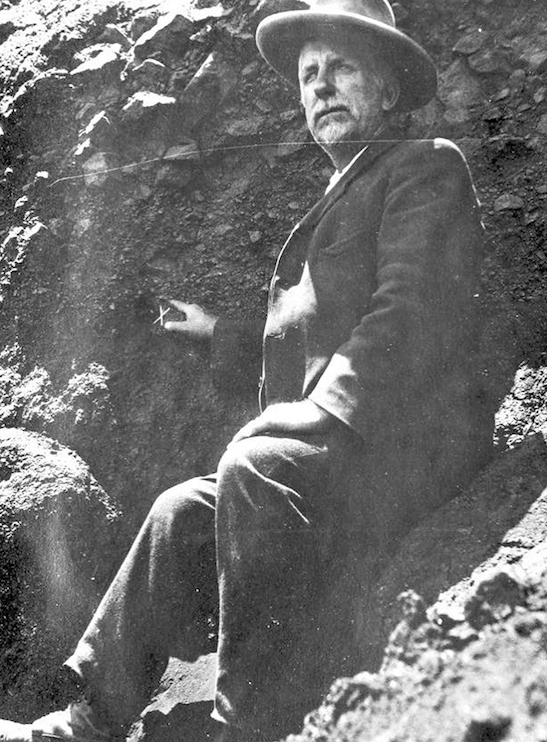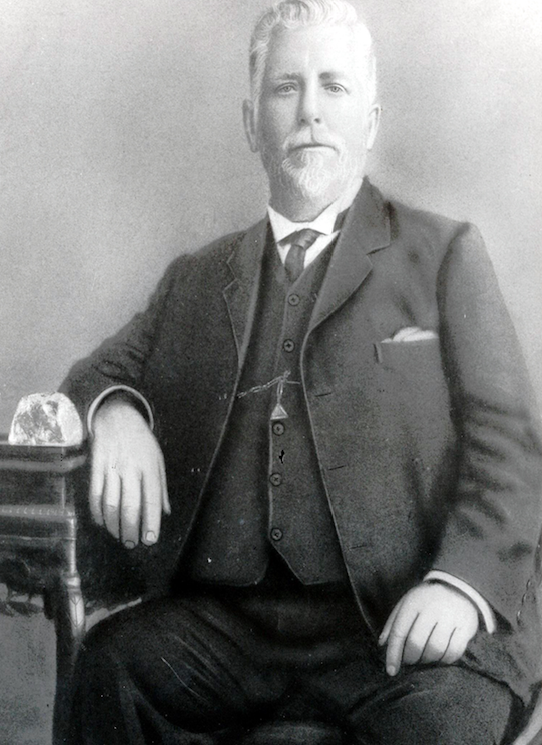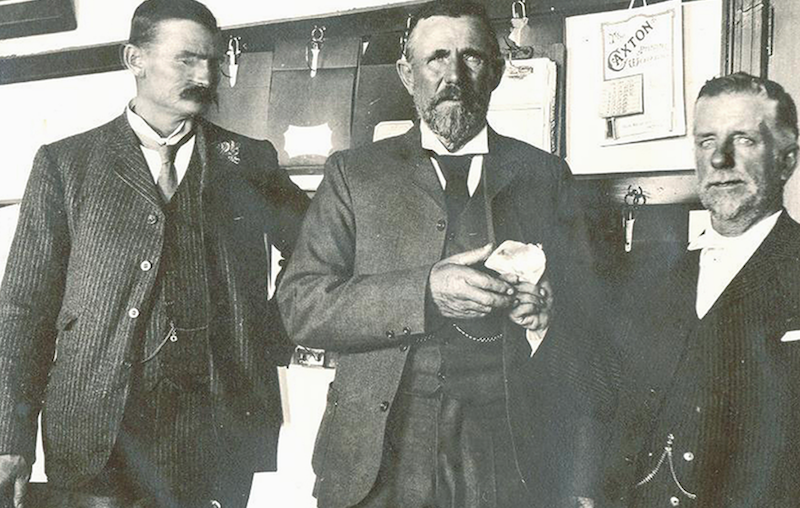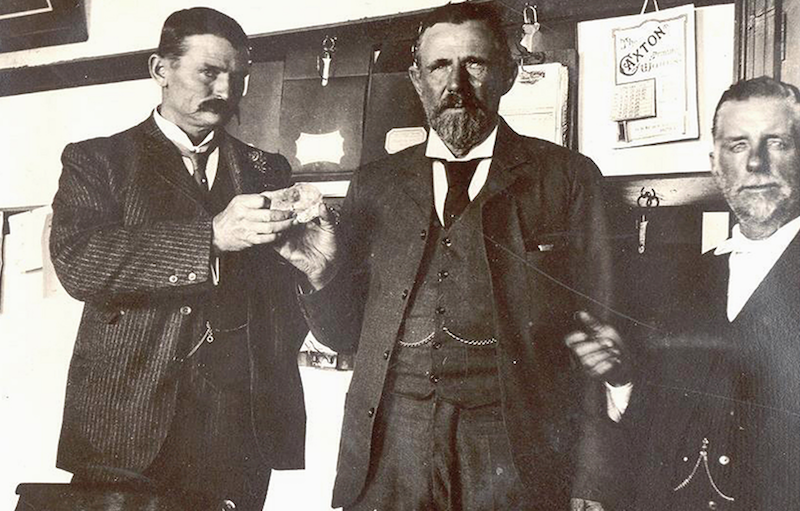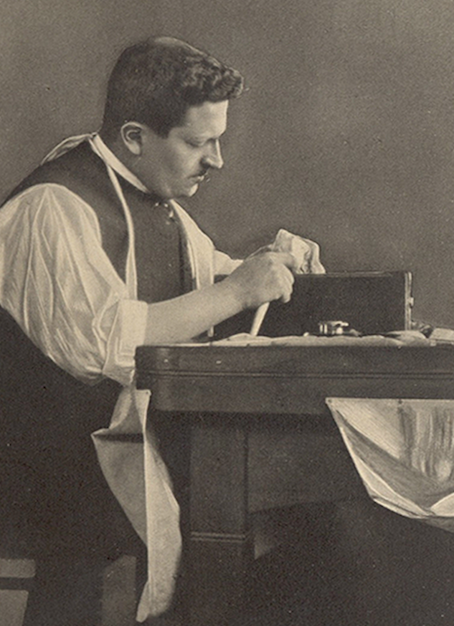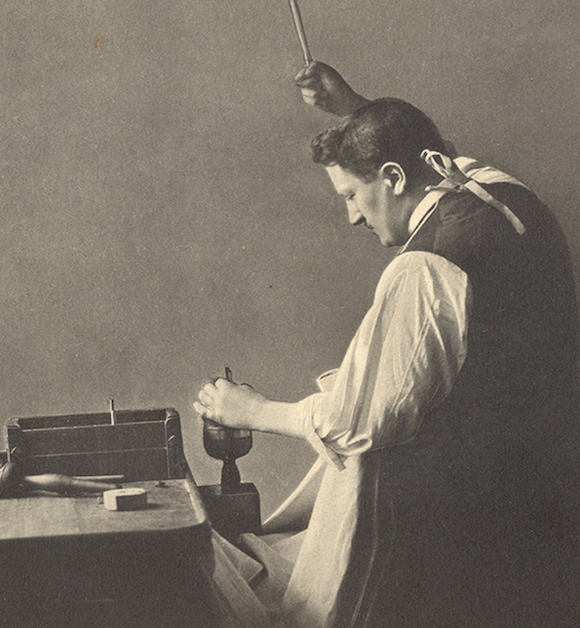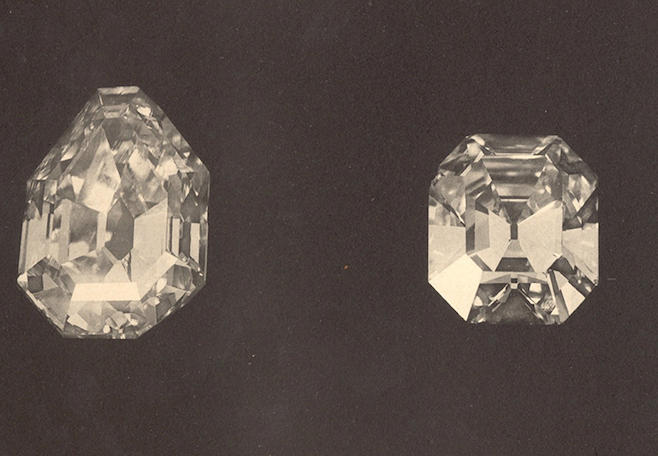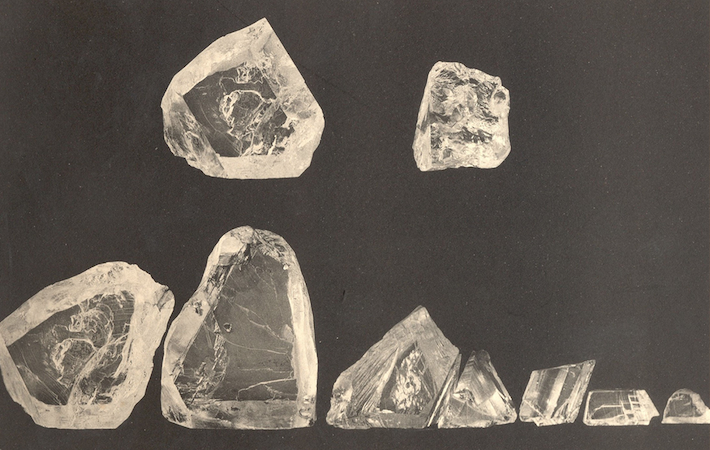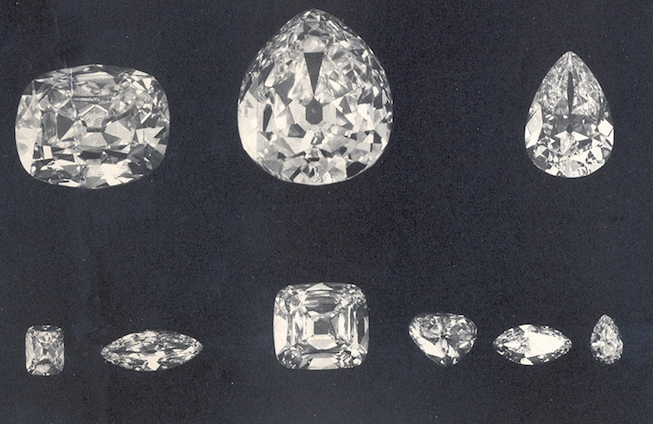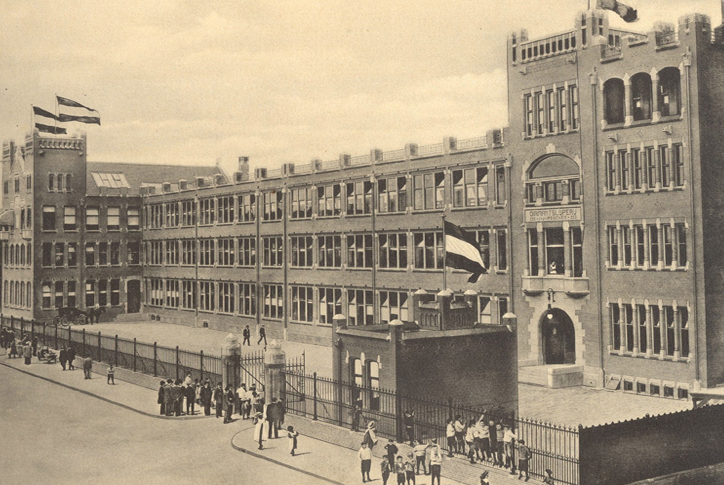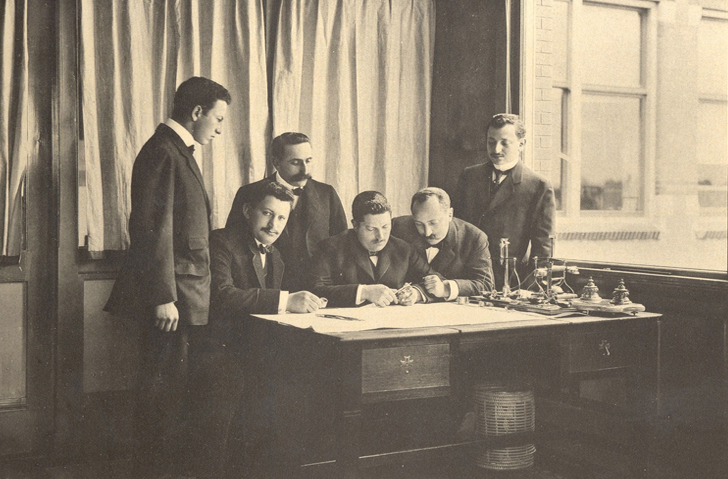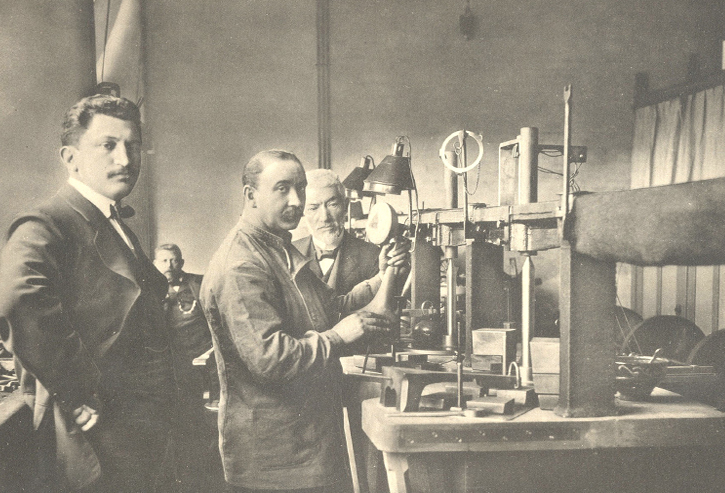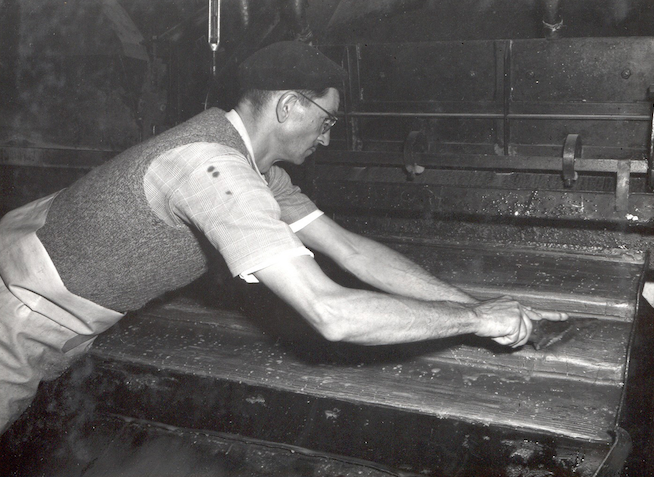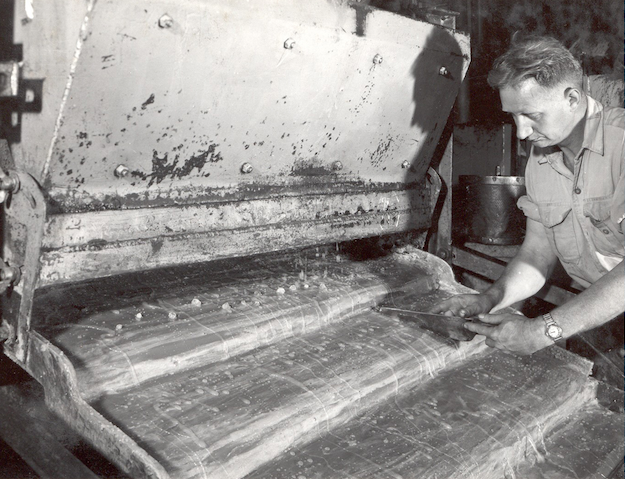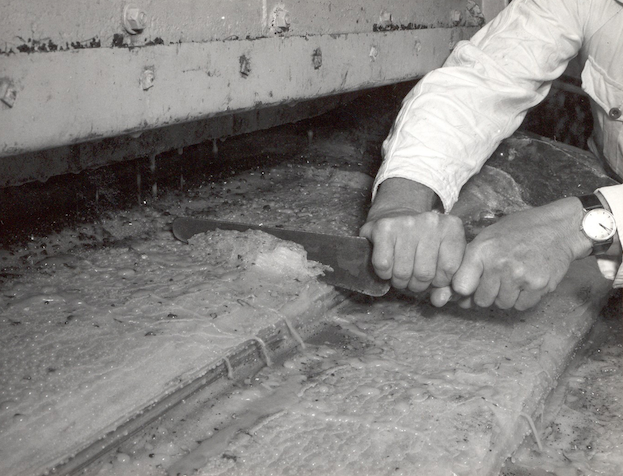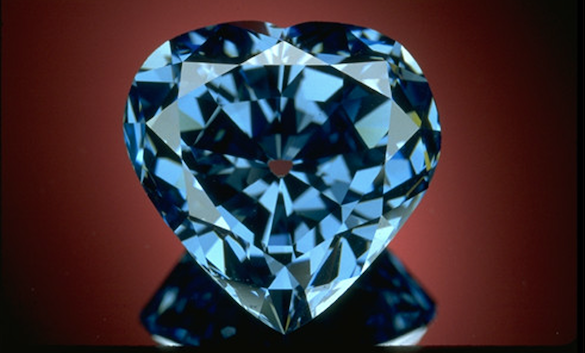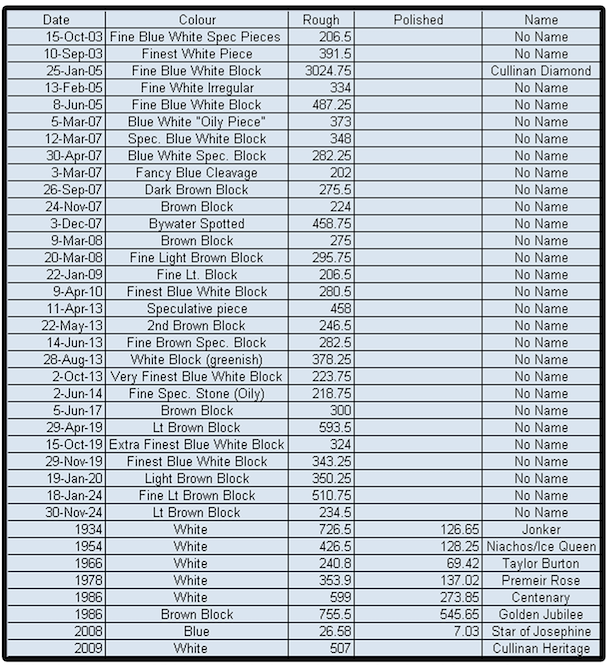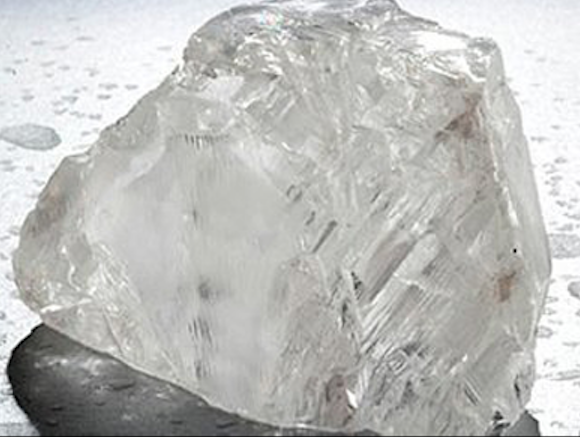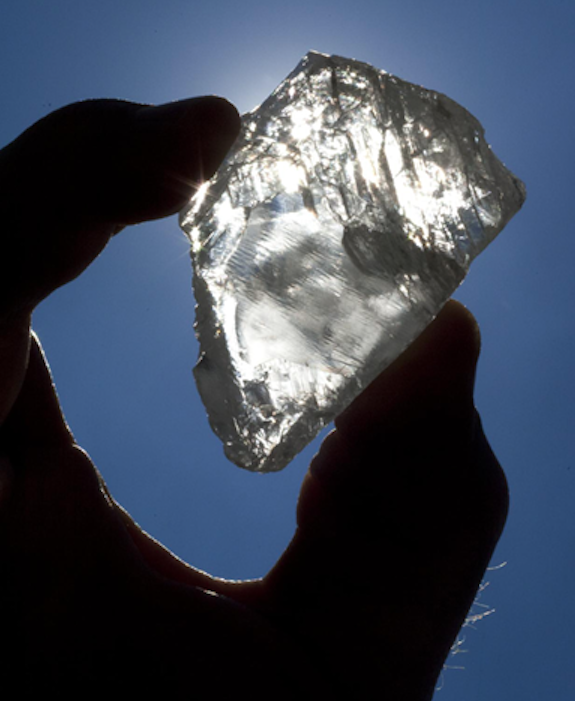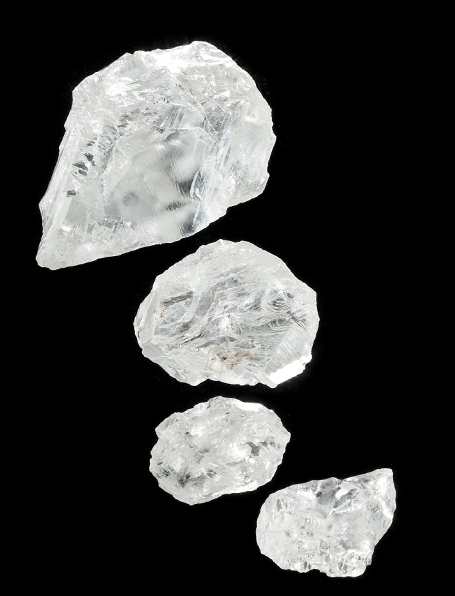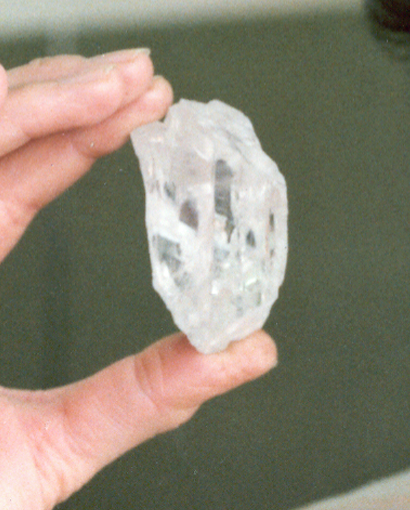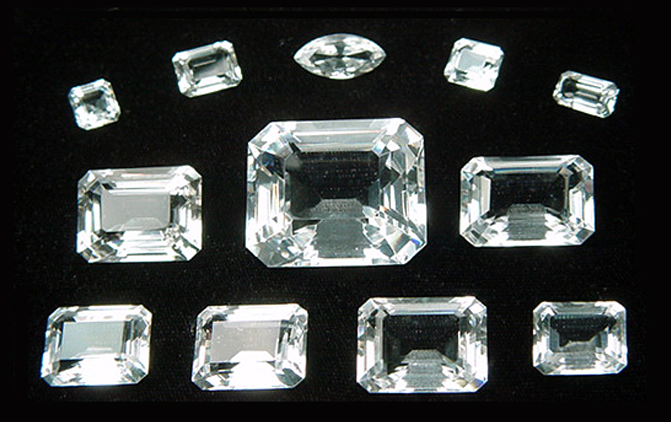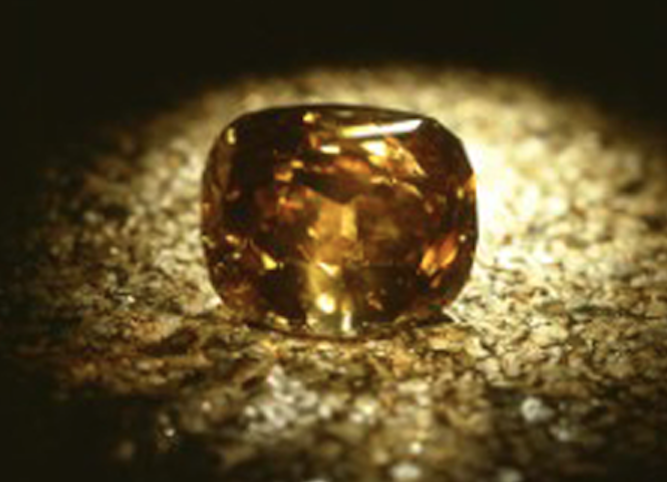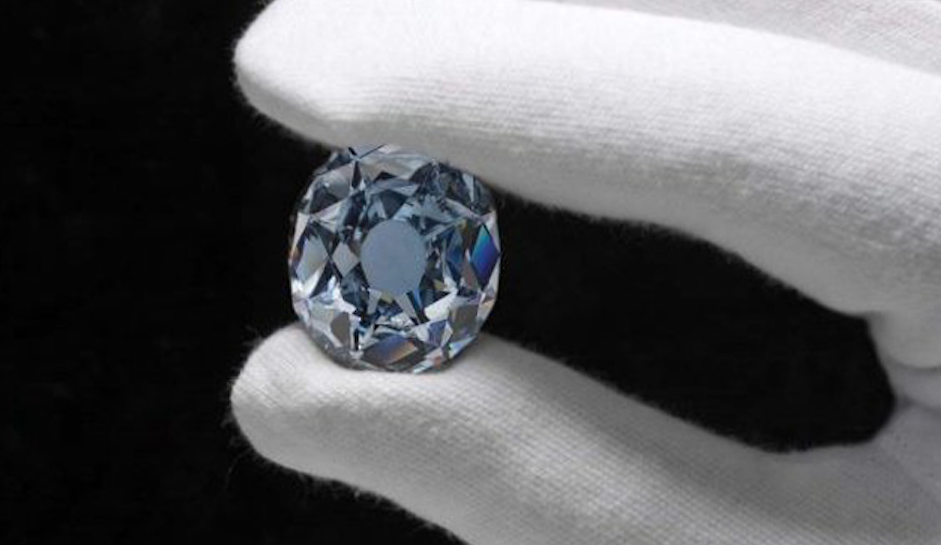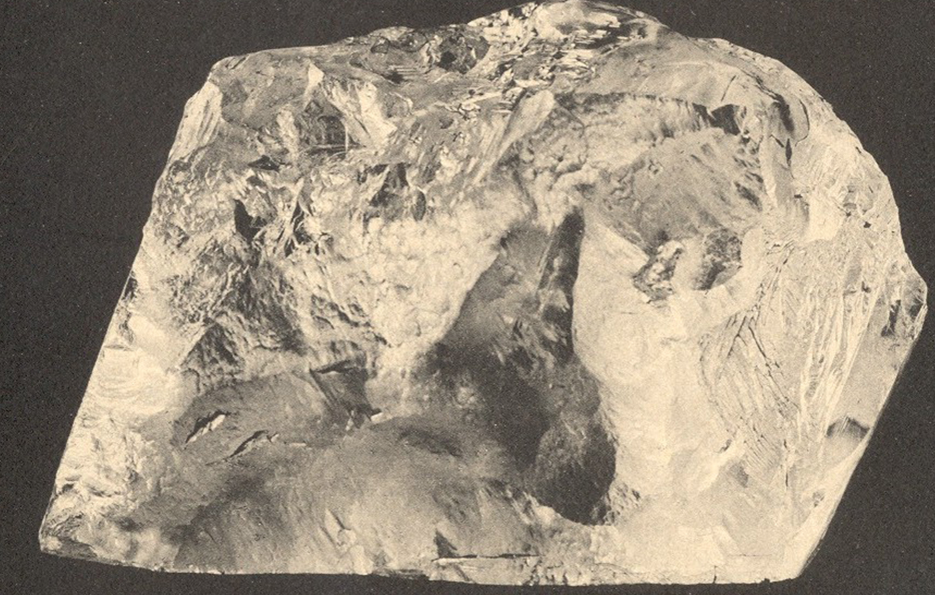
Disclaimer: Any views expressed by individuals and organisations are their own and do not in any way represent the views of The Heritage Portal. If you find any mistakes or historical inaccuracies, please contact the editor.
Below is the second installment of a series based on John Lincoln's wonderful book Story from a Diamond Mine (click here to view series index). It looks at the discovery of the famous Cullinan Diamond and highlights some of the mysteries that are still with us today. The piece finishes by looking at some of the other famous stones that have emerged from the Cullinan / Premier Mine.
Fred Wells
Fred Wells is credited with finding the Cullinan Diamond, although some sources credit an African worker for pointing it out to him. Either way, on the 25th January 1905 the world’s biggest diamond was found. Fred Wells was at that time surface manager, and his daughter relates that “as my father was doing his routine inspection that evening he saw something glittering in the sunlight high up the side of the mine. He climbed up, and extracted the stone with his pocket knife. It was pronounced by the experts to be a diamond of exceptional quality, and the name by which it became at once known was bestowed in honour of Mr (later Sir) Thomas Cullinan, chairman of the company and discoverer of the mine”. She also relates that “when my father transported his large family of eight children plus a nephew from Kimberley to Premier Mine, there were only two houses with some tents clustered around the small washing plant. “We children used to play in and out of the works, sorting for rubies, as the grown-up girls helped sort the diamonds. “In those days (1903) everything, machinery, building material, food, yes and even people, had to travel from Van Der Merwe station by Cape cart or ox wagon as we did. I’m sure my father breathed a prayer of thankfulness when he got us safely installed in the one house available. The general manager Mr. William McHardy occupied the other”. (This house is thought now to be the info centre.)
Fred Wells points to the spot where he found the diamond (Cullinan Mine Archives)
Fred Wells with the diamond (Cullinan Mine Archive)
Thomas Cullinan
In 1903, shortly after Tom had begun to dig prospecting pits at the mine, he had promised his wife that one day he would bring her “the biggest diamond in the world”. She laughed and soon forgot the promise. Two years later the promise was fulfilled when the diamond was found. In the evening the diamond was weighed and measured in the mine office, and the chairman, then at home in Johannesburg was informed. Tom called a special meeting of directors at his home the following morning, and later that day went out to the mine himself, where he was photographed watching Wells hand over the great stone to William McHardy. Lady Cullinan never got to own the diamond, and legend has it that to appease her, he commissioned a silver necklace on the occasion of his knighthood in 1910. There were over 200 diamonds set into the necklace including 9 rare blue diamonds, said to represent the 9 stones cut from the Cullinan Diamond. The necklace is now on show at the Smithsonian Institute in a display case next to the famous Hope Diamond.
Fred Wells passes the diamond to McHardy (Cullinan Mines Archive)
McHardy then gives the diamond to Cullinan (Cullinan Mine Archives)
The Cullinan Diamond
The diamond weighed 3024¾ South African carats, which was 3106 metric carats, and measured 4 by 2½ by 2 inches. The stone was bought by the Transvaal Government and presented to King Edward. It was then cut by Joseph Asscher into nine major gems and various smaller brilliants. The two largest gems were retained for the Crown Jewels; the rest were given to Asscher for his fee. King Edward bought one for his consort, Queen Alexandra.
Mr Joseph Asscher making an incision (Cullinan Mine Archives)
Mr Joseph Asscher using the hammer for the first operation (Cullinan Mine Archives)
The people of South Africa bought the other six major gems and presented them to Queen Mary in 1910. The largest stone is a 520.2 carat pear-shaped diamond and at that time was the largest cut diamond in the world. This is known as the Cullinan I and is also called the Great Star of Africa. It is set in the Imperial Sceptre and is on display at the Tower of London. The second stone, Cullinan II or the Lesser Star of Africa, was then the second-largest cut stone in the world at 317.4 carats and is set in the Imperial State Crown. This is also on display at the Tower.
The Cullinan I and II (Cullinan Mine Archives)
The nine major stones before being cut (Cullinan Mine Archives)
The nine major stones after being cut (Cullinan Mine Archives)
The photographs used above are from a book of photographs produced by Joseph Asscher. One of these books was signed by Joseph Asscher and presented to Ross Frames who was the resident director of the mine (Cullinan Mine Archives)
Below is an extract from a Report taken from the Century Magazine by Dr F. Kunz:
The cost of cutting the Cullinan stone was met by the sale of several of the minor diamonds. The popular story was that the Asscher Brothers, of Amsterdam, suggested that they would cut the Cullinan Diamond free of charge if they were allowed to cut from the cleavage pieces left over, a miniature replica of each of the nine stones. The suggestion was placed before King Edward, and his reply was said to be “There should be no replica of the Crown Jewels, no matter how small, cut from the Cullinan Diamond”.
Dr Kunz was probably right. They were never cut as replicas of the Crown Jewels, but as ordinary diamonds and sold as such.
Asschers' factory in Amsterdam (Cullinan Mine Archives)
The Asscher brothers inspecting the stone (Cullinan Mine Archives)
The room built to cut the stone (Cullinan Mine Arhives)
The Mystery of the Cullinan Diamond
When was it found?
Mystery surrounds the exact date the Cullinan Diamond was found. In the De Beers archives in Kimberley on micro film is an unsigned typed note saying the diamond was found on the 26th of January 1905 and not the 25th. In many subsequent books and even on the internet webpage of Wikipedia the date of the find is given as the 26th January. Thomas Helme, who wrote the autobiography of Thomas Cullinan, also uses the date of the 26th in his book. But is that date correct? In a pamphlet written by Hatch and Corsorphine called A description of the big diamond recently found in the Premier Mine in April 1905 the date is given as the 25th January 1905. In a magazine article written by Well's daughter in 1946 she also says that her father found the diamond on the 25th January. In the diamond book of Exceptional diamonds found at Premier the date is also given as 25th January.
Two of the daughters of William McHardy, the manager of the mine at that time, also said that they held the diamond at a party on the night of the same day on which the diamond was found. References to this party by others who held the diamond have also been made. The two daughters said the party was a Burns Supper. William McHardy was a Scotsman and Burns suppers, which are a toast to Scotland's famous poet are traditionally held on the 25th of January.
Who found the diamond?
Fred Wells and an unknown worker have been credited with finding the diamond. Thomas Helme in his book refers to Wells being led to the diamond by an African worker. His daughter in her newspaper article said her father found the diamond. Once again reference books are equally divided about the finding of the diamond.
Was it part of a bigger diamond?
Experts are equally divided about whether or not the diamond was part of a bigger stone. Hedley A Chivers in his article in 1927 said, "When Fred Wells saw the original stone glistening in the side of the cavity the probability was at once recognised that it was a portion of a bigger stone, and speculation became general as to where the other half was." He names a man called Fourie, who was later executed for poisoning a chieftain, as boasting that he was known in the I.D.B. circles as the man who wished to buy the missing half of the Cullinan Diamond. It had earlier, in 1906, been strongly rumoured in Pretoria that the second half had been found and stolen by a worker. The legend goes on to say that Fourie and this worker met, but whether Fourie obtained the diamond is not known.
Hedley ends his article with "All that is certain is that there is, or was, another bigger portion of a stone of which the Cullinan Diamond was only a part.
Only if we find the other 'half' can we end speculation about whether or not it was part of a bigger stone.
The Liberation of Diamonds from Kimberlite
At Nos. 3 and 4 gear the kimberlite would be washed and reduced further by crushing and other means. This ground would then be fed into hoppers where the heavier diamond-rich ground would be forced out of the top of the hopper.
The diamond-bearing ground is fed across grease tables. The diamonds will stick to the grease and waste material will be sluiced away. To recover the diamonds, the grease and diamonds are scraped off the table. The mixture is then placed in a pot and heated up to melt the grease, which runs off and leaves the diamonds to cool before sorting.
Premier Mine had, under an arrangement with De Beers who held the patent rights, 16 grease tables.
The photographs above show how the grease and diamonds which have stuck to the grease are scraped off the table using broad knives (De Beers)
The Blue Heart Diamond
In the Smithsonian Institute is a 30.62 carat fancy blue diamond which was donated to the institute by Marjorie Merriweather Post. She in turn had acquired the gem from Harry Winston in 1964. Van Cleef and Arpels had bought the stone in 1953 from a Mrs Unzue of Argentina. It is known that Atanik Eknayan of Paris cut the stone in 1909/10 and sold the diamond to Pierre Cartier in 1910. The gem is also known as the Eugénie Diamond. Eugénie, the consort of Napoleon III, died in 1920. It is not known if she ever owned this diamond. Until now, the origin of the uncut stone was also unknown. It was thought that the diamond could have come from either India or South Africa.
The diamond did, in fact, come from Premier Mine. It was cut from a 100.5 carat diamond found on the 2nd November 1909. Eknayan bought the diamond for £4020-0-0.
The above information has been found in a book of Record of Exceptional Stones found at Premier Mine. The book was probably written, from now long-lost records, in 1931 just before the mine closed in 1932.
Blue Heart Diamond (De Beers)
Terrible Tale from the Diggings
Many sick and no medicines or Doctors (from a newspaper report in 1920)
A gentleman who has just come to Johannesburg from the alluvial diamond diggings in the Premier Mine area, Pretoria district, reports a serious state of affairs. Whole families he states are laid up with sickness. There appears to be some doubt as to the nature of the malady. Some people believe it to be influenza and others an outbreak of malarial fever.
Malaria fever has been very bad in many parts of Pretoria and district just lately, which points to the probability of that being the cause. "Whatever the nature of the sickness may be,” said our informant, “the reason for the people going under is not easy to find. They are in such a weak condition as a rule that the least little thing knocks them over. They have no power of resistance, and when anything in the nature of an epidemic comes along it flies from family to family like wildfire.
“When I went down a little while ago to work for a few weeks while on leave I took a good quantity of quinine with me. I gave every grain of it away on the first day. People were literally clamouring for it. Medicine of any sort is nearly impossible to get down there.
“The Diggers Committee has done its best but it cannot obtain or supply all the medicine required. Doctors cannot be got. There seem to be none available in the neighbourhood, and I am told they have been advertised for unsuccessfully with a guarantee of ₤5 a day.
“The diggers in the district are not doing well. At Kameelfontein there are only about fifty claimholders. The great majority are at Bynestpoort. There are a few finding well, but not the average.
“A great many, including myself who pegged got out of the run. Diggers have gone down as much as 17 feet in the overburden in places without striking gravel. I, of course have only been appending the limited time of my leave there, and am now returning to work. I thought, however, it would be as well for people who think of going down to those diggings to have some idea of what is ahead of them.”
Some of the exceptional stones found at Cullinan / Premier Mine
Cullinan Heritage Diamond found in 2009 (Petra Diamonds)
Another shot of the Cullinan Heritage Diamond (Petra Diamonds)
The Heritage with other fragments found at the same time (Petra Diamonds)
The uncut Centenary Diamond found in 1986. The discovery was kept secret until the Centenary celebrations of De Beers were held in 1988 at Kimberley (Petra Diamonds)
The stones cut from the Jonker Diamond
The Golden Jubilee. At 545.67 carats it is the largest faceted diamond in the world. (Cullinan Mine Archives)
"The Star of Josephine". This 7.02 carat diamond was cut from a 26.58ct. flawless blue diamond found in 2008. Joseph Lau Luen-Hung bouth the diamond for $9.5 million, giving him the right to name the diamond. (Cullinan Mine Archives)
Comments will load below. If for any reason none appear click here for some troubleshooting tips. If you would like to post a comment and need instructions click here.

